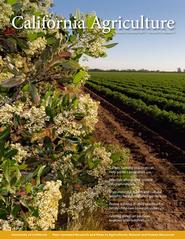All Issues

Pollinators throughout the world are experiencing declines due to habitat degradation, pesticide exposure, disease, and climate change. Although pollinators and the services they provide to agriculture are not the primary focus of carbon farming, numerous carbon storage practices, such as the hedgerows shown here, can be adapted to benefit pollinators without diminishing climate outcomes or economic benefits to farmers (see Sardiñas et al., page 104). Photo: Will Suckow.
Volume 76, Number 4





